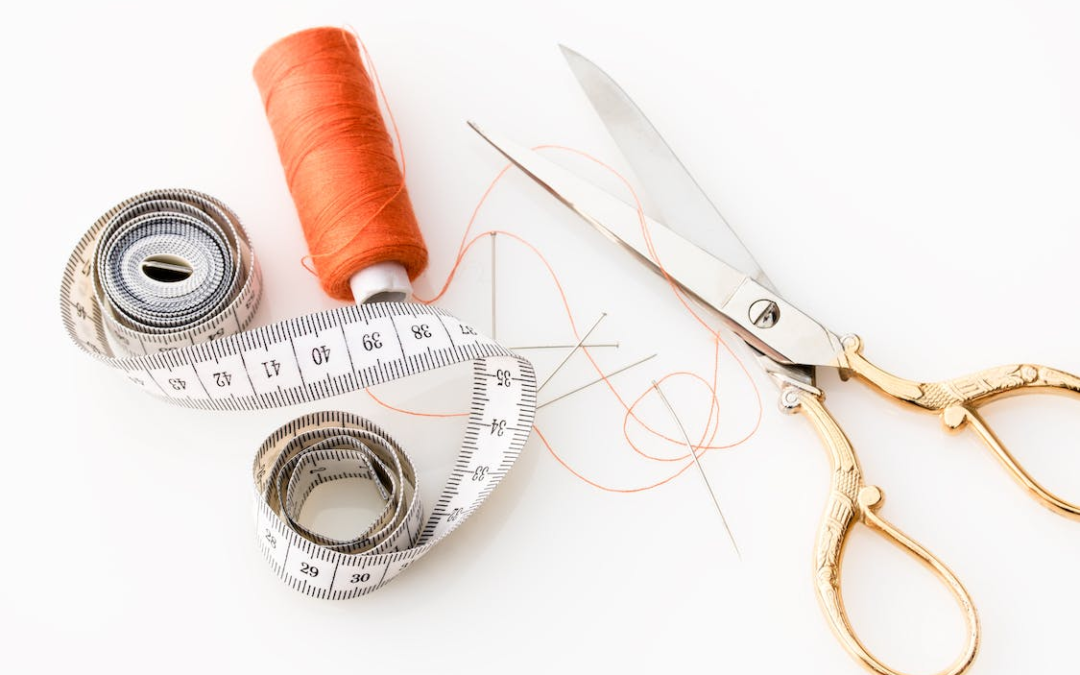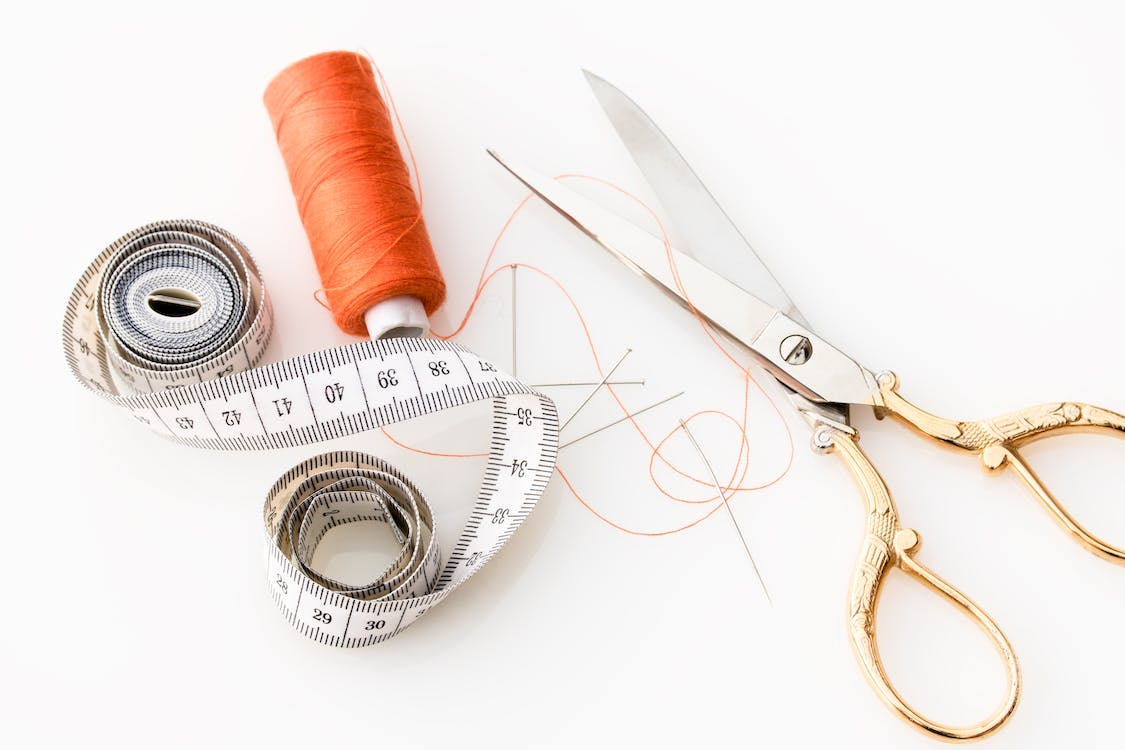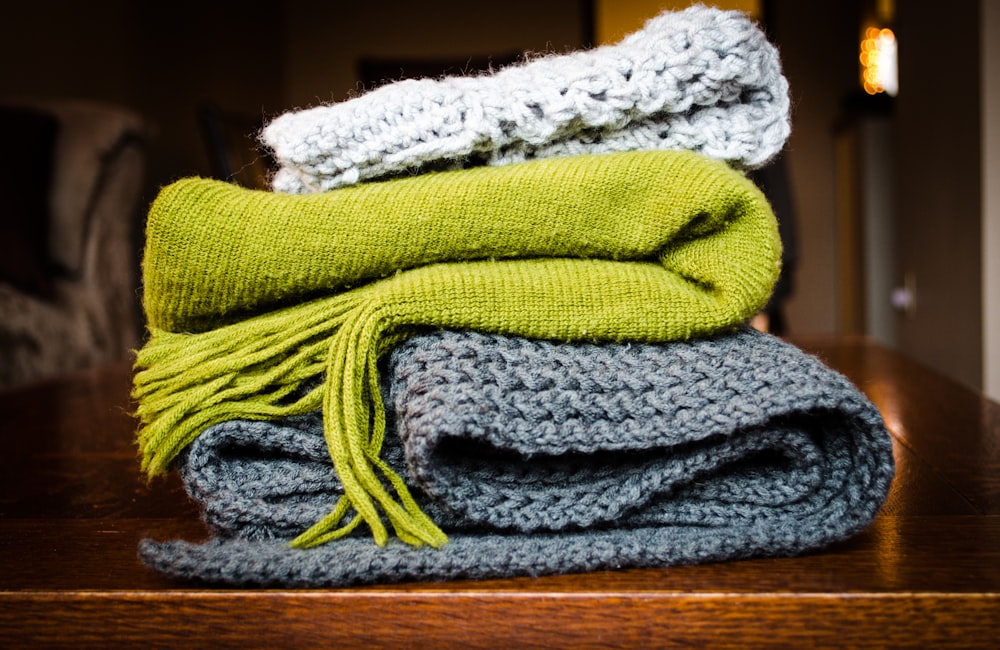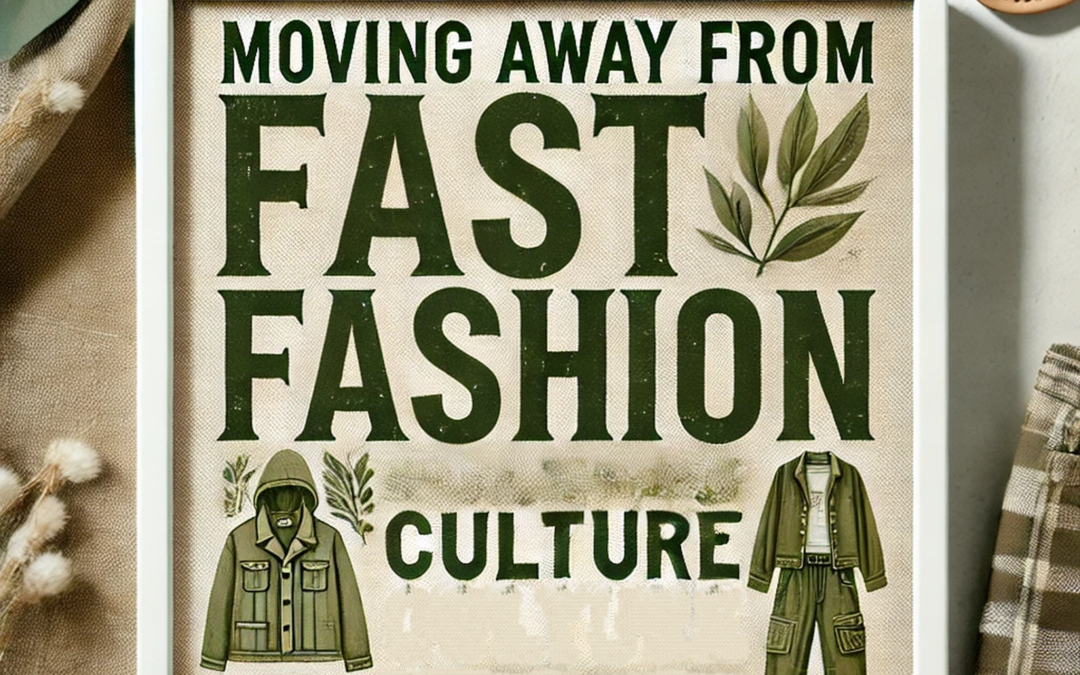
Fashion Detox: How to Escape the Fast Fashion Trap
In a world where trends change at the speed of a click and clothing is mass-produced at a rapid pace, Fast Fashion has become the norm. It’s tempting to follow the cycle of constant newness, but this culture of disposable clothing comes with a heavy price – both for the planet and for our personal style. As we become more aware of the environmental and ethical impacts of our fashion choices, it’s time to rethink our approach. “Fashion Detox” is about breaking free from the fast fashion trap and embracing a more sustainable, mindful way of dressing. Moving away from fast fashion culture is essential in third-world countries due to its exploitation of cheap labor, leading to poor working conditions and low wages. It contributes to environmental degradation, as waste and pollution from the industry disproportionately affect vulnerable communities. Overconsumption strains local resources and perpetuates unsustainable practices. Additionally, fast fashion undermines traditional craftsmanship, threatening local economies and cultural heritage. Shifting to sustainable practices promotes fair labor, environmental health and long-term economic stability. Transitioning away from fast fashion culture requires a shift in mindset, habits and consumption patterns. Here are actionable steps to help make this transition:
- Educate Yourself :
It involves gaining a deeper understanding of the impact of fast fashion on the environment, workers, and society. Knowledge can be gained by researching how fast fashion contributes to pollution, waste and unethical labor practices. And also exploring documentaries, books and articles that shed light on sustainable fashion and ethical production. Learning about sustainable materials, fair trade and circular fashion principles. The user should familiarize themselves with brands that prioritize transparency and ethical practices. Following activists, designers and organizations who promote slow fashion on social media for regular insights. By educating themselves, they can become more conscious of the consequences of their purchases and empowered to make informed decisions. Knowledge is the foundation for embracing more sustainable consumption patterns.
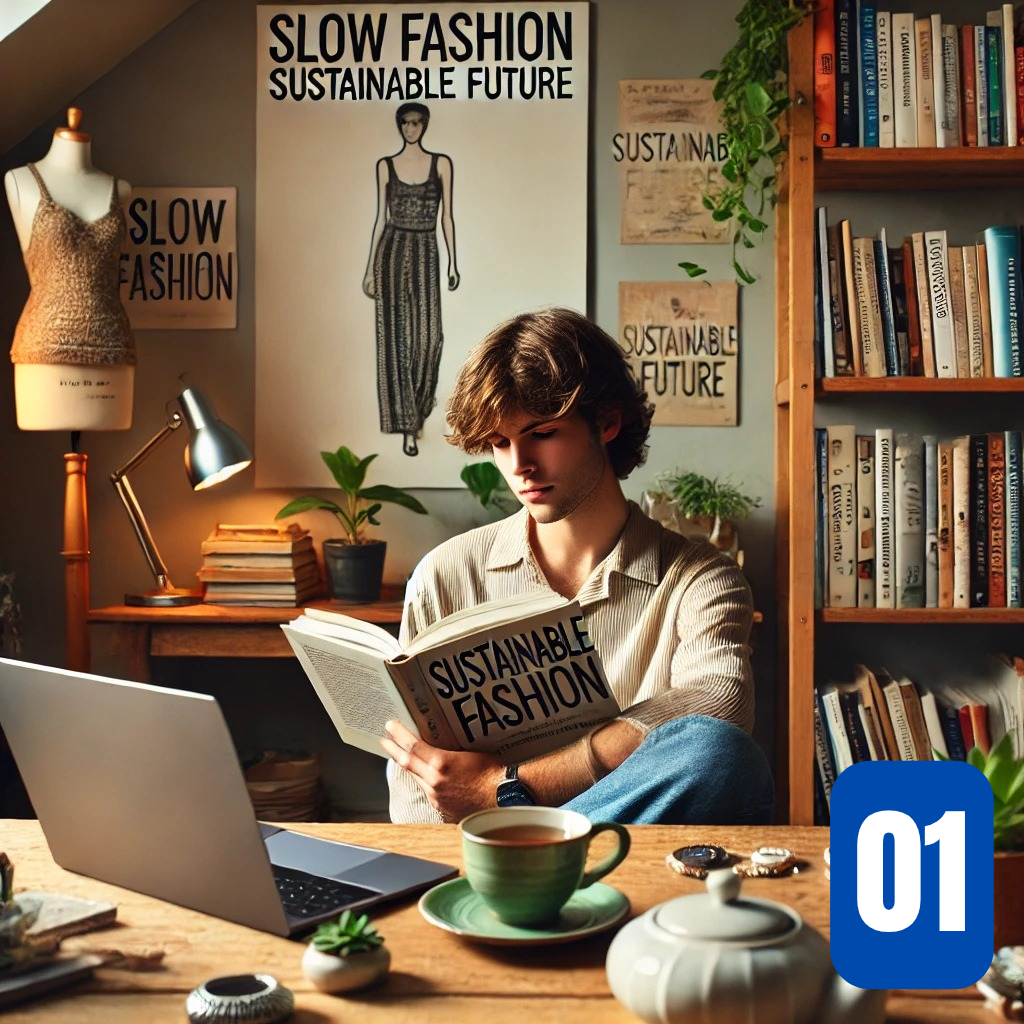
Educate Yoursel
- Adopt a “Less Is More” Mindset :
Transitioning away from fast fashion starts with embracing minimalism in the user’s wardrobe. Instead of chasing trends, users should focus on quality over quantity—choosing timeless, versatile pieces that last longer. A “Less Is More” mindset encourages mindful purchasing, reducing impulse buys and ensuring every item serves a purpose. This shift not only saves money but also minimizes waste and supports sustainable fashion practices.

Adopt a “Less Is More” Mindset
- Shop Secondhand :
One of the best ways to move away from fast fashion is to embrace secondhand shopping. Thrift stores, vintage shops and online resale platforms offer unique, high-quality clothing at affordable prices. Buying pre-loved fashion reduces waste, extends the life cycle of garments and minimizes the demand for new production, which is often resource-intensive. Shopping secondhand not only helps the planet but also allows the users to express their personal style with one-of-a-kind pieces.
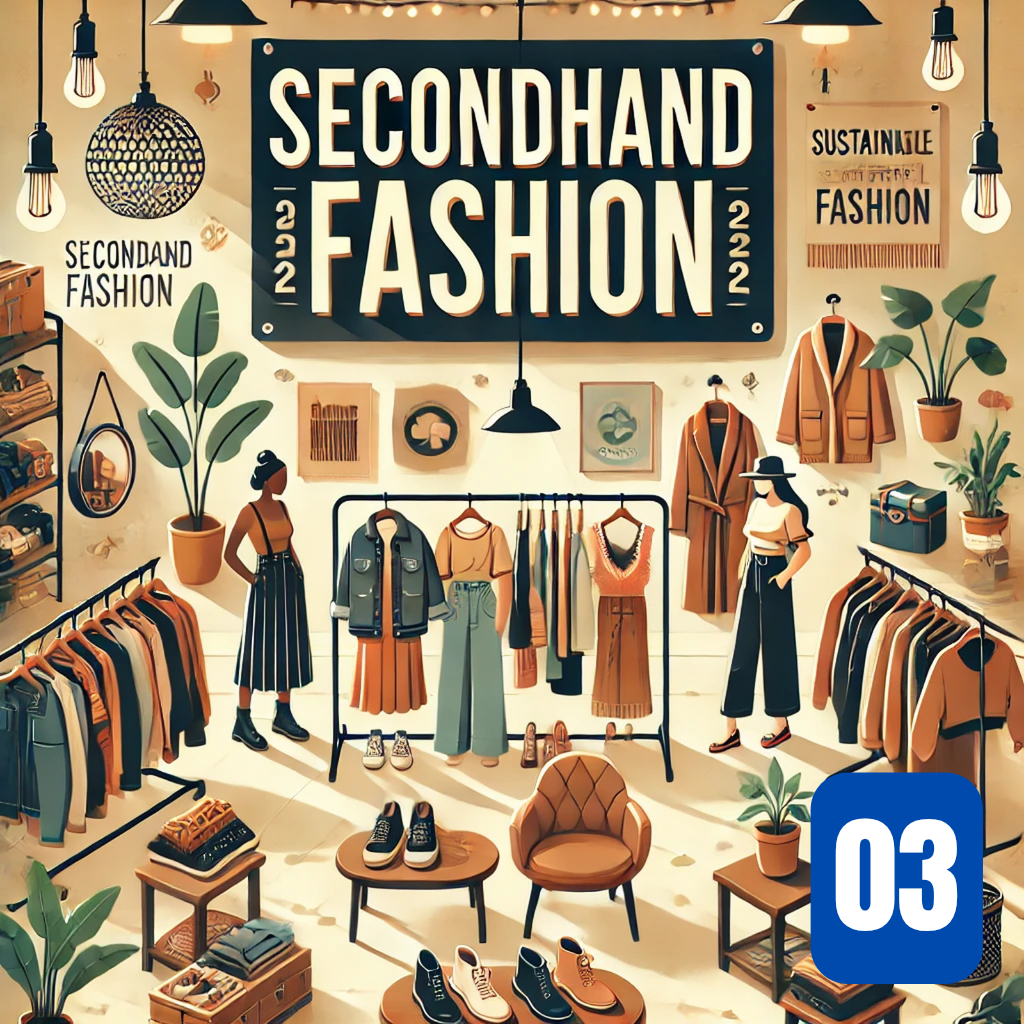
Shop Secondhand
- Support Ethical Brands :
Supporting ethical brands means prioritizing clothing companies that are transparent about their production processes, prioritize fair wages and use sustainable materials. Brands with certifications like Fair Trade or GOTS (Global Organic Textile Standard) are most applicable in this regard. Looking for labels indicating organic, recycled or ethically sourced materials. Purchasing from these brands not only ensures quality but also supports ethical labor practices and environmentally friendly production. This approach aligns user’s shopping habits with values of sustainability and fairness, helping to shift away from fast fashion culture.
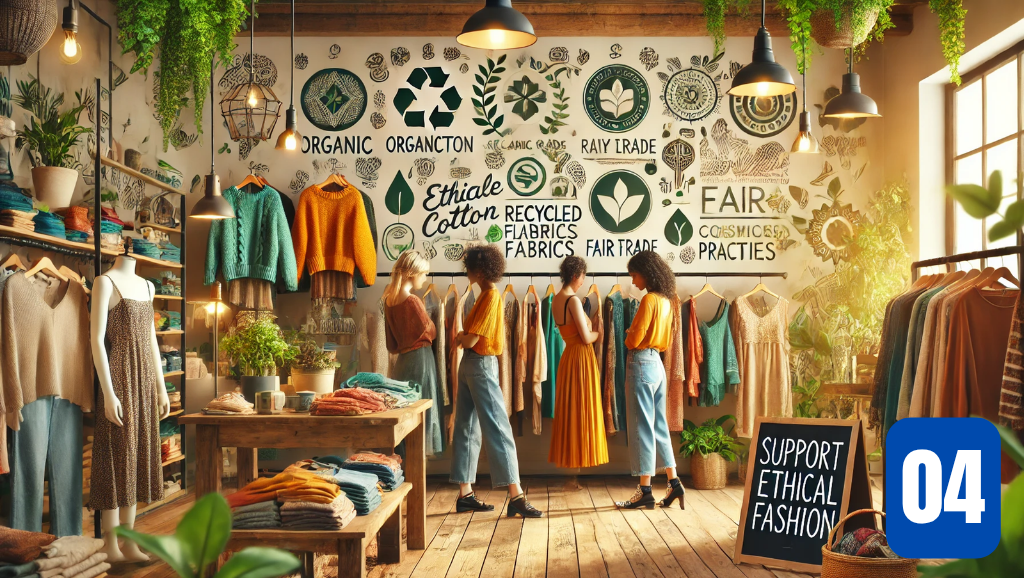
Support Ethical Brands
- Take Care of Your Clothes :
Extending the life of the user’s garments is a simple yet powerful way to combat fast fashion culture. It can be started by following care labels to wash clothes at the correct temperature and avoid harsh detergents that weaken fibers. Air-dry garments instead of using a dryer to reduce wear and tear. Mend small damages like loose buttons or minor tears rather than discarding the item. Store the clothes in a proper way by folding knits to prevent stretching and using padded hangers for delicate fabrics. Rotating wardrobe to evenly wear items and prevent overuse of favorites. Regularly clean shoes and accessories to maintain their longevity. By treating the clothes with care, a user not only save money but also reduce the demand for constant replacements, which helps the environment.
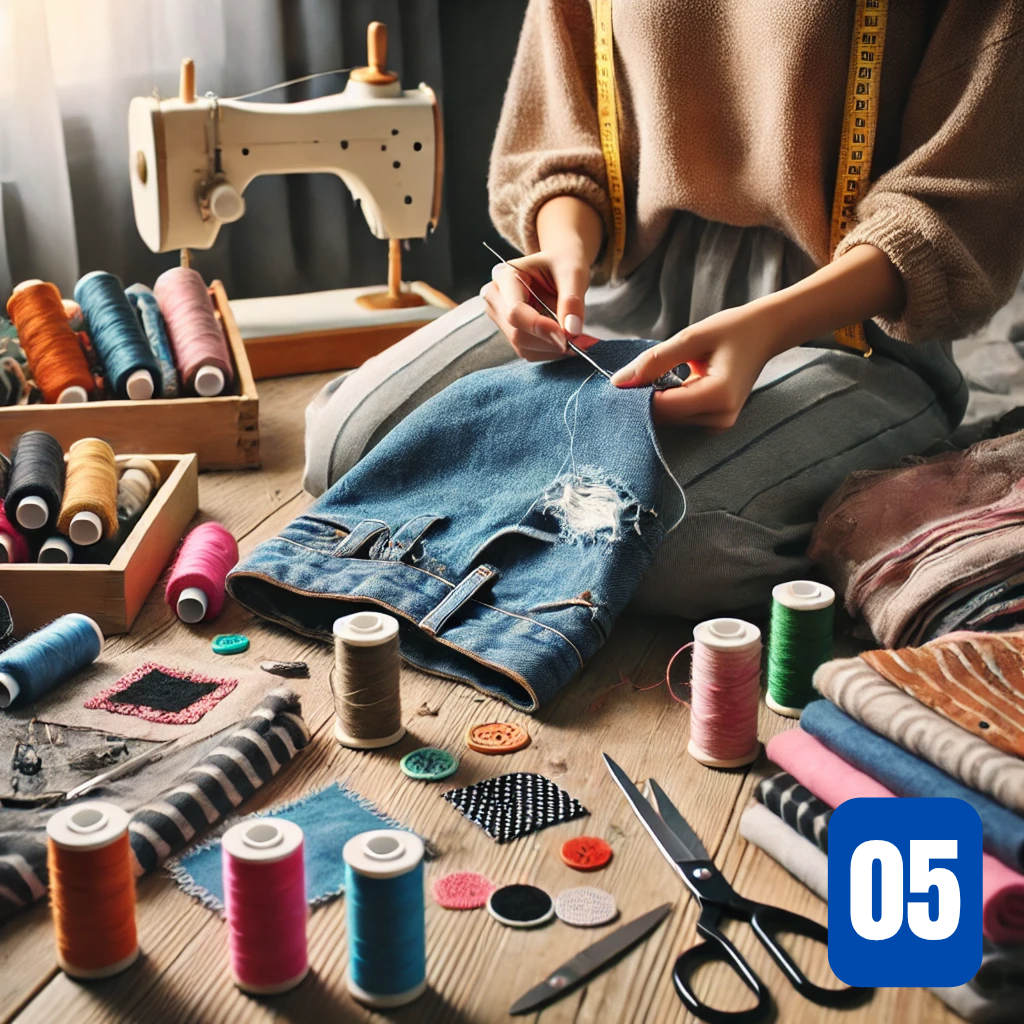
Take Care of Your Clothes
- Rent or Borrow Clothes :
It is an excellent way to reduce reliance on fast fashion while embracing sustainable practices. Instead of buying new outfits for special occasions or events, consider renting clothing from rental platforms or borrowing from friends and family. This approach allows the users to enjoy variety and style without contributing to overproduction or waste. Renting ensures that garments are reused multiple times, extending their lifecycle and reducing environmental impact. For casual or daily wear, borrowing from loved ones can foster a sense of community and sharing. By choosing this option, users can also save money and avoid cluttering their wardrobe with items that might only be worn once. Supporting rental businesses promotes a circular economy and helps normalize alternative consumption patterns.
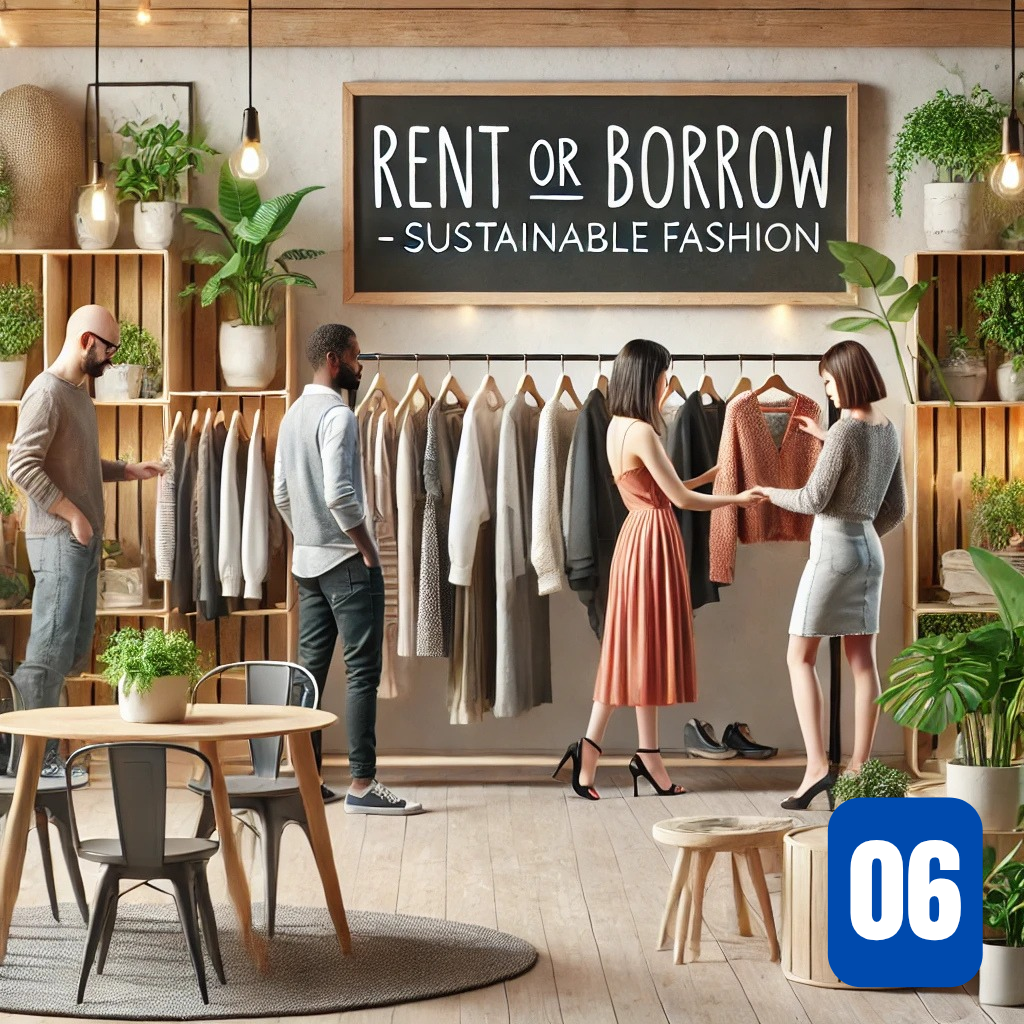
Rent or Borrow Clothes
- Be a Conscious Consumer :
To transition away from fast fashion, users should focus on being a conscious consumer. This involves carefully evaluating the brands and products they support. By looking for items that are made from sustainable materials, produced ethically and designed to last. Prioritize quality over quantity, avoid impulse purchases and choose secondhand or upcycled options when possible. Being a conscious consumer is about aligning their values with their spending habits, reducing waste and supporting ethical practices in the fashion industry.
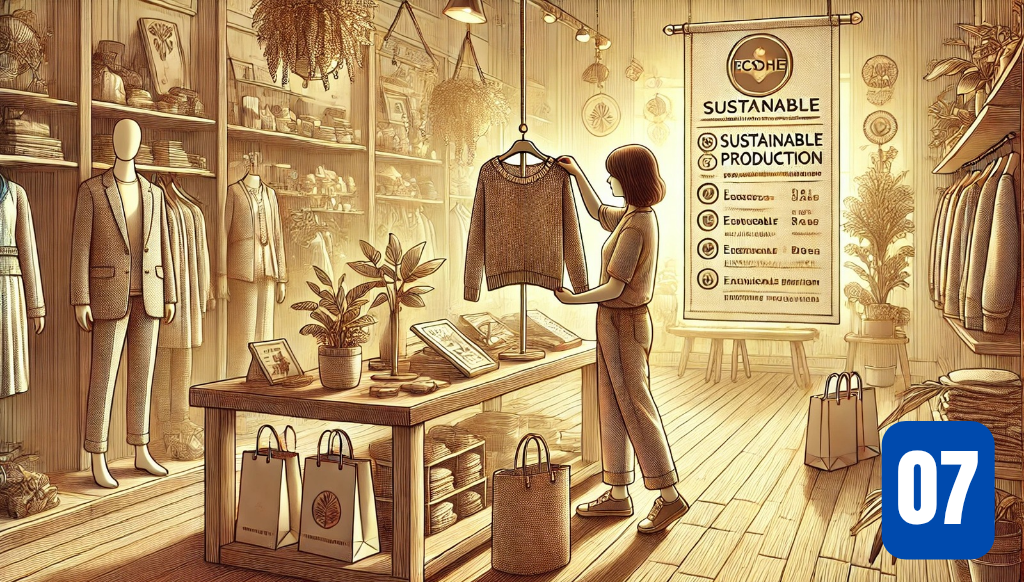
Be a Conscious Consumer
Be a Conscious Consume
- Embrace DIY and Upcycling :
It involves reimagining old or unused clothing to reduce waste and cultivate a more sustainable wardrobe. Instead of discarding worn-out or outdated items, users can transform them into something fresh and unique. This could mean turning an old pair of jeans into shorts, adding patches to a jacket or sewing decorative elements onto a plain t-shirt. Learning basic sewing, stitching or crafting skills can make this process enjoyable and rewarding. Additionally, upcycling allows the users to express personal creativity and create one-of-a-kind pieces that reflect their style. By embracing DIY, they can extend the life of their clothes, save money and reduce the demand for new fast fashion products. It’s a practical way to minimize waste and align the wardrobe with sustainable values.
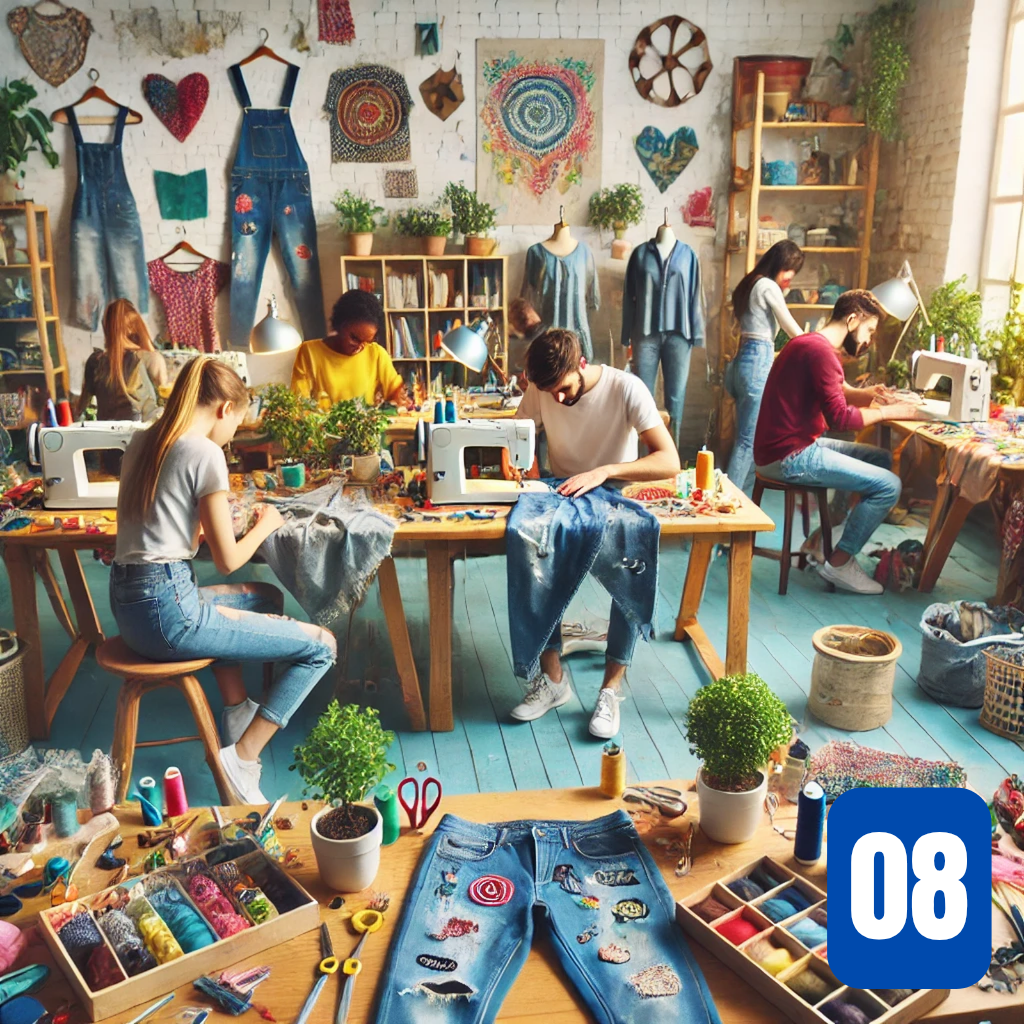
Embrace DIY and Upcycling
Embrace DIY and Upcyclin
- Spread Awareness :
That involves educating others about the environmental and social impacts of fast fashion. One can start it by sharing facts and stories on social media, emphasizing the harmful practices in garment production and the benefits of sustainable alternatives. They can also engage in conversations with friends, family and colleagues to discuss the hidden costs of cheap clothing, such as exploitative labor and pollution. Moreover, supporting and amplifying the voices of ethical fashion advocates and organizations; hosting or attending events like clothing swaps, documentary screenings or sustainability workshops. Encourage transparency by asking brands about their supply chain practices. The goal is to inspire others to rethink their buying habits and collectively demand better standards in the fashion industry.
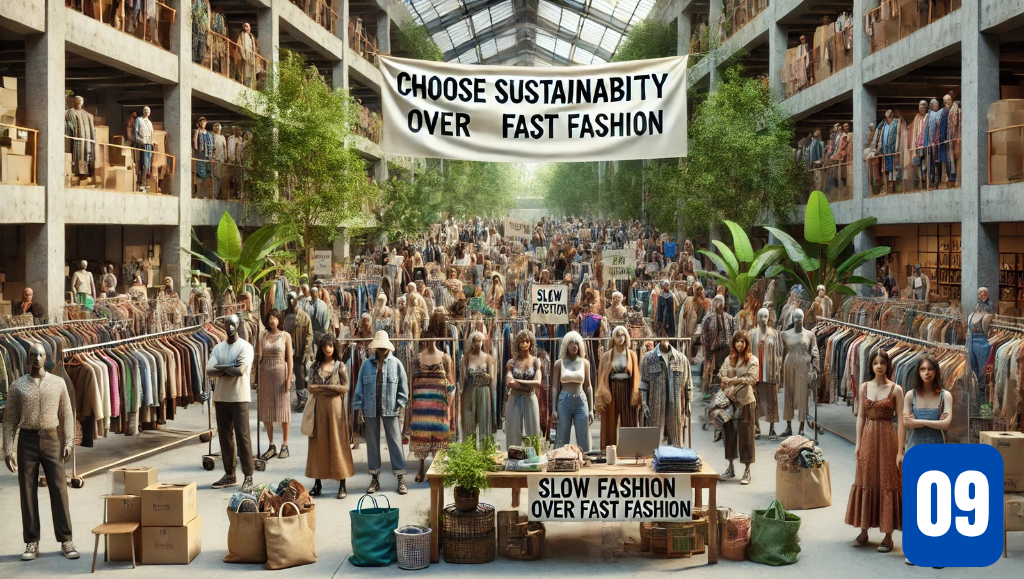
Spread Awareness
- Measure Your Impact :
It involves understanding the environmental and social consequences of users’ clothing choices to make more informed decisions. They should research the carbon footprint, water usage and waste generated by fast fashion brands. Using tools like online carbon calculators to estimate their wardrobe’s environmental impact. Analyze how often they wear items and identify pieces that go unused. By tracking their shopping habits, they can note how frequently they purchase and discard clothes. Consider the broader implications, such as labor conditions and resource exploitation behind fast fashion production. By quantifying their impact, they gain a clearer picture of how their choices contribute to global issues. This awareness can motivate more sustainable behaviors, like choosing quality over quantity and supporting ethical brands. Measuring their impact turns abstract concerns into tangible goals for reducing consumption and waste.
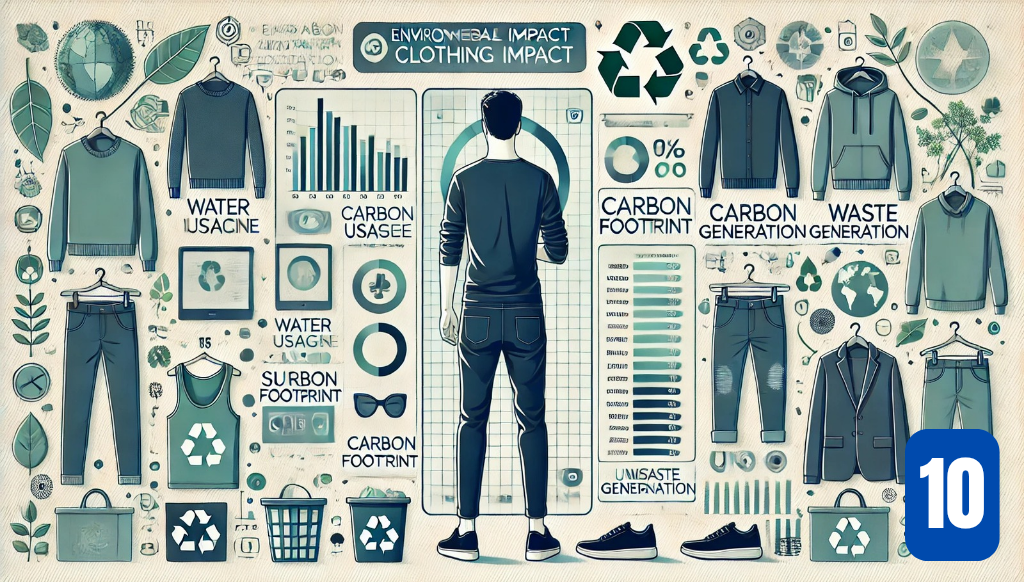
Measure Your Impact
Embracing sustainable alternatives to fast fashion is not just an environmental responsibility but also a step toward social and economic justice. By supporting ethical practices, we can empower workers, protect natural resources and foster local industries. It is a collective effort that requires mindful consumer choices and advocacy for fair policies. The journey toward a Fashion Detox is personal, but it’s one that has the power to transform both our closets and our world for the better. Transitioning away from Fast Fashion ensures a more equitable and sustainable future for all. Together, we can break the cycle of exploitation and environmental harm. Let’s choose timeless style over temporary trends and be part of a fashion revolution that values longevity over speed.
SUDIPTO BANIK
University: Bangladesh University of Textiles (BUTEX)
Dept: Textile Fashion & Design (TFD) Batch: 47 ; ID: 202116019.
Feel free to write to us at fashionnovationfd@gmail.com

